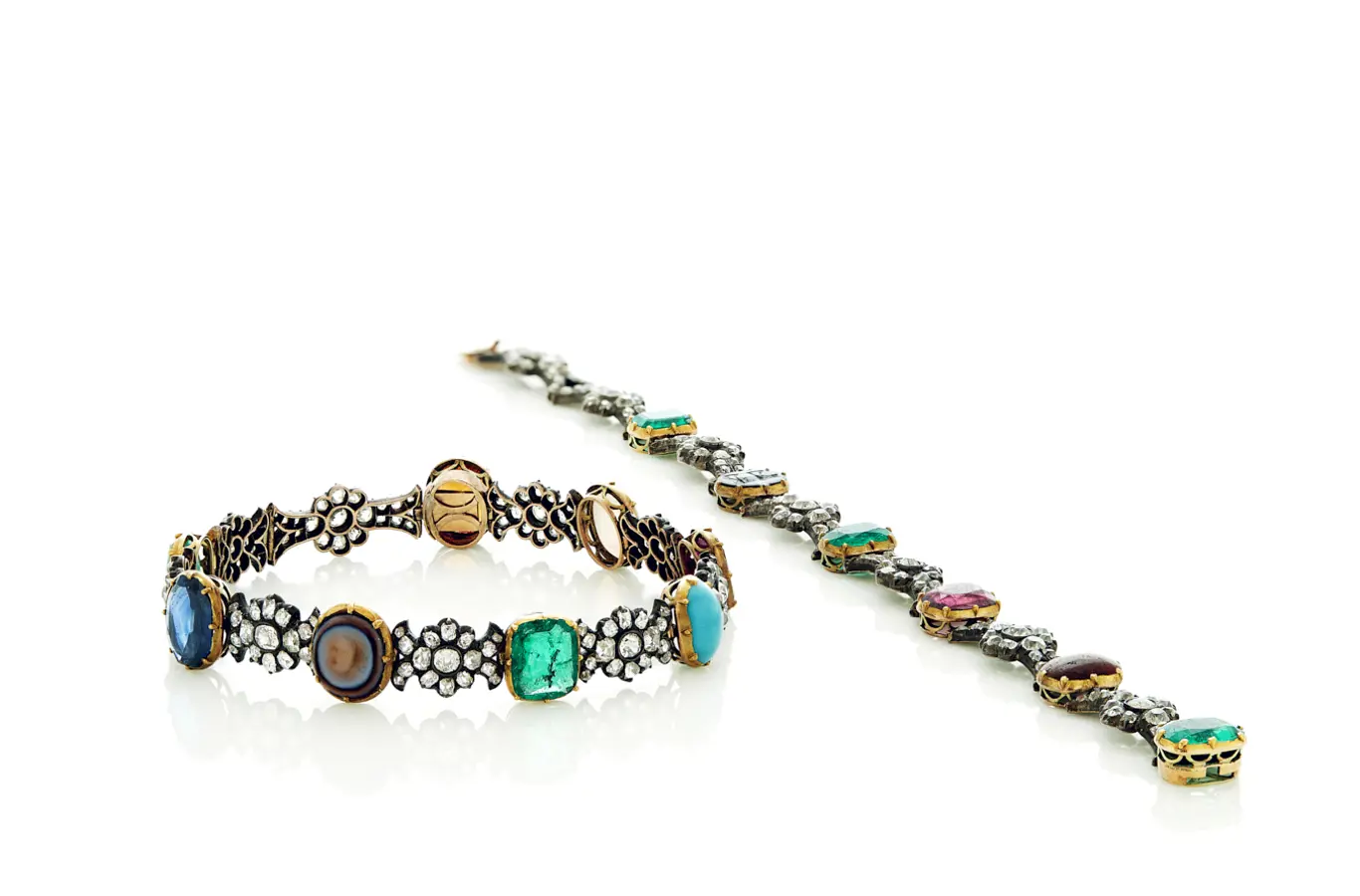
Empress Josephines bracelets is a part of the jewellery in The Danish Royal Property Trust.
The two bracelets with coloured gemstones and diamond rosettes belonged to Empress Josephine, who was married to Emperor Napoleon. The couple had no children together, but when Napoleon, in 1806, adopted his wife’s two children from her first marriage, Eugène and Hortense, he presented the pair of bracelets to Josephine as a keepsake.
The bracelets are so-called acrostic bracelets, after the Greek words ‘akro’ meaning ‘extreme’ and ‘stikhos’ meaning ’lines’. It is a concept in the art of poetry, in which all lines in a poem begin with letters which – read vertically – create a new word or name. In Josephine’s bracelets, the initial letters in the French names of the gemstones used can be read as the names of her two children. EUGÈNE is ‘written’ in one bracelet with Emeraud (emerald), Uniaxe (unakite), Grenat (garnet), Emaraude, Nicolo , Emeraud. HORTENSE is written in the second bracelet with a Hessonite, Opale (opal), Rubis (ruby), Turquoise, Emeraude, Nicolo, Saphir (sapphire), Emeraude.
The two bracelets were made by the jeweller François-Regnault Nitot, which is now the jewellery company Chaumet på Place Vendôme Paris. The company was established in 1780 and had Queen Marie Antoinette among the prominent customers.
Empress Josephine was divorced from Emperor Napoleon, but the two bracelets were inherited by the principal figure of one of the bracelets, the son Eugène. After his death, the bracelets were passed on to his second-oldest daughter, Amélie, who was married to Emperor Dom Pedro I of Brazil. The Emperor and Empress died without surviving children, so, upon Empress Amélie’s death in 1873, the bracelets went, together with, among other things, the Brazilian diamond frame, to Amélie’s older sister, Queen Dowager Josefina of Sweden. From her, it passed on to her granddaughter, Swedish-born Crown Princess Lovisa of Denmark, who was married to the Danish Crown Prince Frederik (VIII). Ever since the couple established The Danish Royal Property Trust in 1910, the bracelets have belonged to it.
